First drive: 2020 Nissan Patrol Platinum in the UAE
The global launch of the 2020 Nissan Patrol was probably the biggest car launch the Middle East has ever seen. While the model is sold in only a handful of countries, it is clearly one of the best-selling premium cars ever in the UAE. The new model is more of an extensive update than a full redesign, but there’s no one better to review the changes, considering we actually own the outgoing model.
The 2020 Patrol has an entirely new front-end, including the lights, bumper, bonnet and side fenders, while the rear features a new tailgate, tail lights and bumper. Oddly enough, they’ve left the front-fender vents unchanged, while the odd cut-out for the tow hook on one side of the rear bumper remains. The locally-installed accessories introduced last year, such as the slimline mirror indicators and roof-rails as well as fender flares, have been deleted.
Other new bits include sequential indicators and new wheels — 18-inch on the lower models with the “offroad” front bumper and 20-inch on top trims with the “city” bumper. But walking up to pull the door handle, it feels exactly like the old model. We drove an LE Platinum City model.
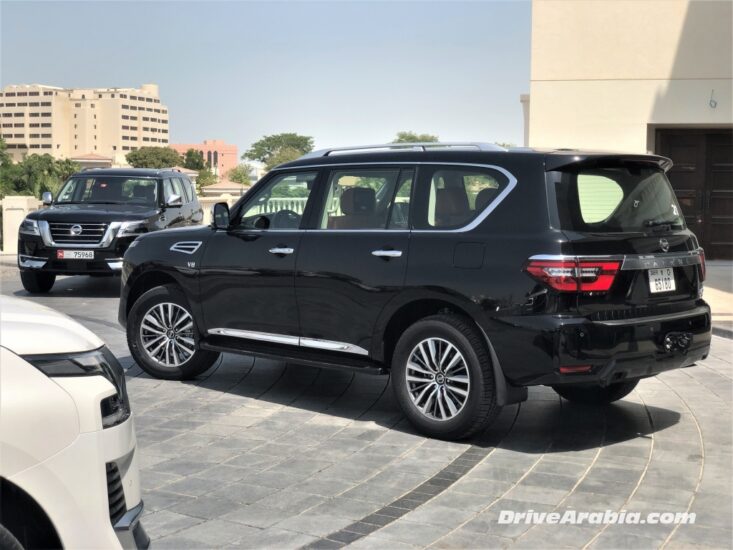
Inside, there is a new centre-console retrofitted into the old dashboard design, but with more stitched-leatherette surfaces for a more premium feel, at least in the Platinum model. Aside from the usual black or beige, Nissan is keen to highlight the new “GT-R Tan” upholstery colour option as well as quilted designs on the seats. The only bit of cost-cutting we found (that absolutely no one else will notice) is that the door panels below the thick armrests are now hard plastic instead of soft-touch like in the old model.
That new centre-console houses the same old 8-inch touchscreen (for maps, Apply Carplay/Android Auto, 360-degree camera, etc.), but the lower half of the console now has a second 7-inch touchscreen to fiddle with a/c, navi and other settings. Thankfully, there are still physical buttons for basic stereo and a/c functions. Lower-spec models get a single 6.75-inch audio screen. Most trim levels also get a new colour 7-inch LCD display between the physical gauges as well. There are also dual rear-headrest screens with USB and HDMI ports on many trim levels.
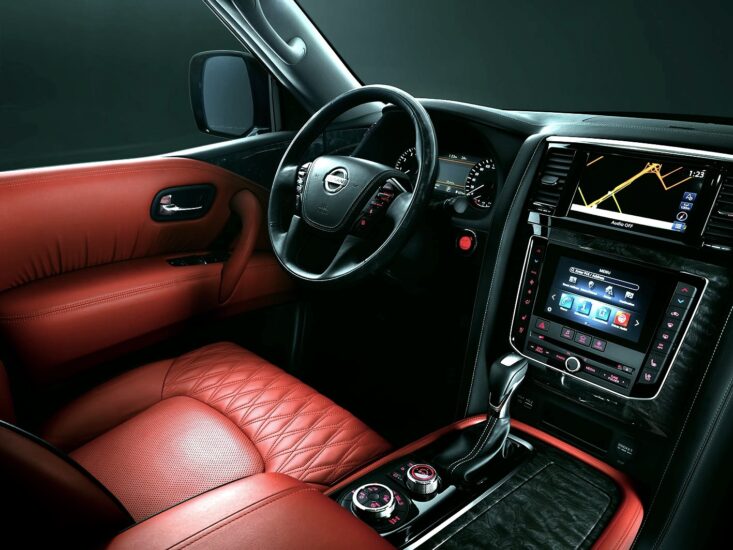
Other notable features on many trim levels include a power tailgate, dealer-installed wireless charger, cooled and powered front seats, power-folding rear seats, standard smart key, LED fog lamps and more, although the world’s smallest sunroof still carries on from the previous model.
Very spacious inside, the largely-unchanged cabin is said to have better sound-deadening, better tri-zone a/c cooling via better ducting especially in the rear, and a new UV coating on the windows. We believe we felt the difference on all counts, although it is very minor as the old car was already good. The most visible difference is that third-row passengers now get different a/c roof vents alongside the third-row roof-mounted grab handles.
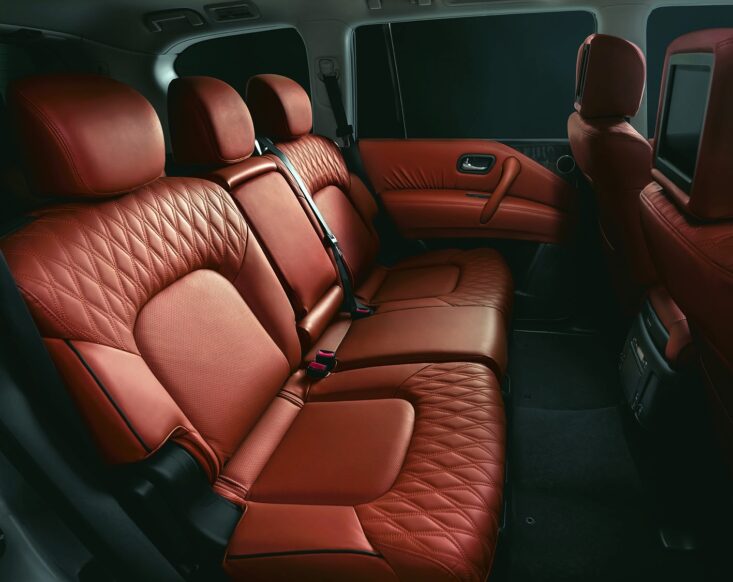
Safety features are extensive, but only if you pay for it. While front airbags, cruise control, front/rear parking sensors, ABS and ESP are standard, you will get a rear camera with an “intelligent” rear-view mirror if you go for one trim higher than base, but you have to shell out for a Titanium or Platinum trim to get side/curtain airbags and all the active-safety features such as collision-preventive braking, adaptive cruise, lane-departure warning and newly-added pedestrian-detection braking.
Engine options remain the same, with a 275 hp 4.0-litre V6 and a 400 hp 5.6-litre V8 both mated to a 7-speed automatic and all-wheel-drive. The only change is a new “Eco” mode for the V8 that dulls the drivetrain’s responsiveness to encourage softer driving. Otherwise in “Normal” mode, we saw less than 5 km per litre (20 litres/100 km). Experience with our own car suggests economy will improve once the engine is broken in over 10,000 km.
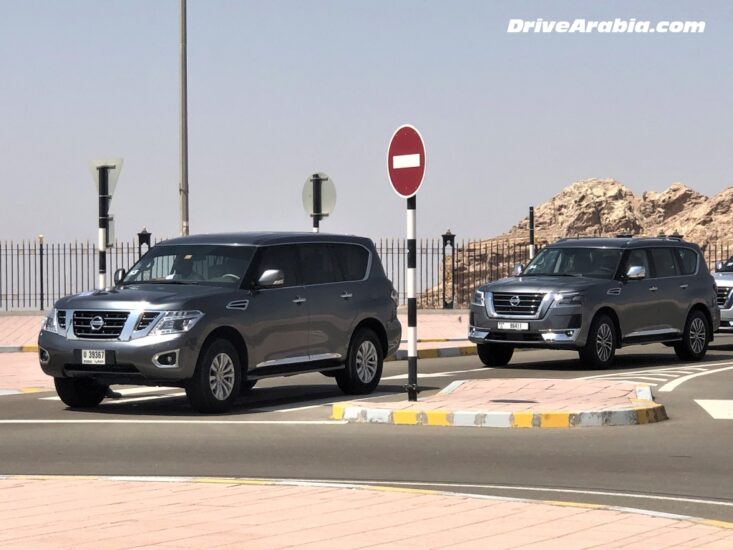
While the V6 will probably be the better seller, the V8 still gets our vote, with just the right amount of power for such a large softly-suspended vehicle. And it remains a smooth driver on the highway. Minor changes to the HBMC (Hydraulic Body Motion Control) suspension include slightly better stability and body-roll resistance. We did a constant 160 kph on the Al Ain-Abu Dhabi highway as well as a brief tyre-squealing run on Jebel Hafeet, both of which were handled without any drama. The steering is a bit light and the brakes are decent. When you are as familiar with its handling limits as we are, you can confidently extract a bit of nimbleness from the Patrol.
Our offroad run was limited to largely flat soft sand. With deflated tyres, the Patrol expectedly sailed over the low dunes without batting an eyelid. That’s what we’ve always enjoyed about the Patrol. It’s not for people with lifted offroaders who intentionally go around in circles and smash into big dunes for fun, but it can be used as a supremely-comfortable expedition vehicle that will actually do huge offroad distances with ease. We definitely wouldn’t be confident doing that with a Land Rover. The Patrol has less electronic gimmicks than most, but it still has a basic terrain-select system, electronically-engaged low-range gearing, hill-descent control and a new feature in the cluster LCD that shows offroady info such as angle of incline.
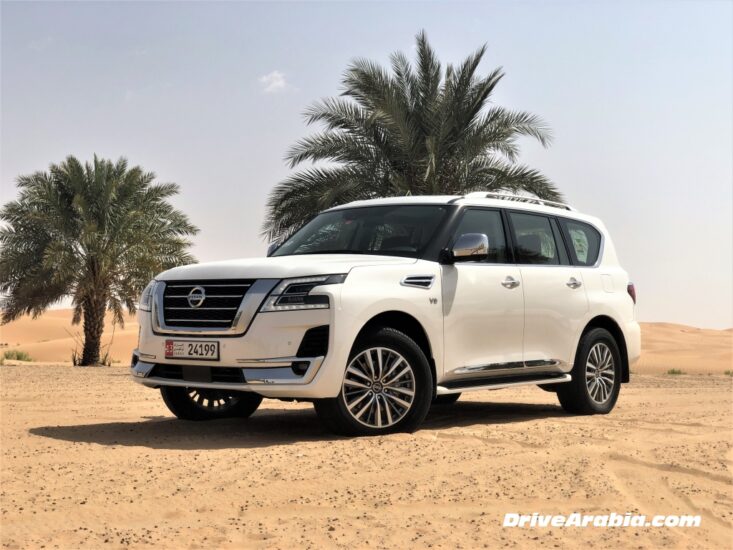
We spent two days with the kind-of-new Patrol and are convinced it is still the most GCC-friendly full-sizer you can buy today. Our only real gripe is that the engines could’ve been fettled with further to improve fuel consumption. The restrained technology upgrades and sharper styling are enough to keep it relevant in a segment that now boasts a turbocharged aluminium-clad Ford Expedition that still has to prove itself in the long run. In terms of the overall package, the current Toyota Land Cruiser poses no challenge whatsoever (at least until the next-gen model debuts…eventually), and it remains to be seen what Chevrolet/GMC can come up with next year. Pricing is roughly the same as before, surprisingly enough, so the Patrol should continue to be a best-seller in this region.
For prices and specs, visit the Nissan Patrol buyer guide.
Photos by Mashfique Hussain Chowdhury and Nissan Middle East.













Comments
Mohammed Tetteh
Very nice
Hosam
Beutiful
Chetan Ved
What is Apply Carplay?
fahad
it has only 7 speed not 8 speed
Mashfique Hussain Chowdhury
You’re right, I lost count after everyone crossed five.
Rabih
Very nice car amazing keep moving
Sooraj
The prices have been jacked up compared to the same option 2019 models
Mahmood Mustafa
Any Idea When The Nismo Version Is Coming?
And How Far It Competes With Current Land Cruiser In Terms Of Fuel Economy?
S3_S@V@GE
Job well done Nissan. Looks even better now with futuristic front & graceful rear tail lights… !!
Hamad
Do you think a V4 Platinum City is a good option over a Tahoe or a Yukon.
Marouf Hussain
What is a V4?